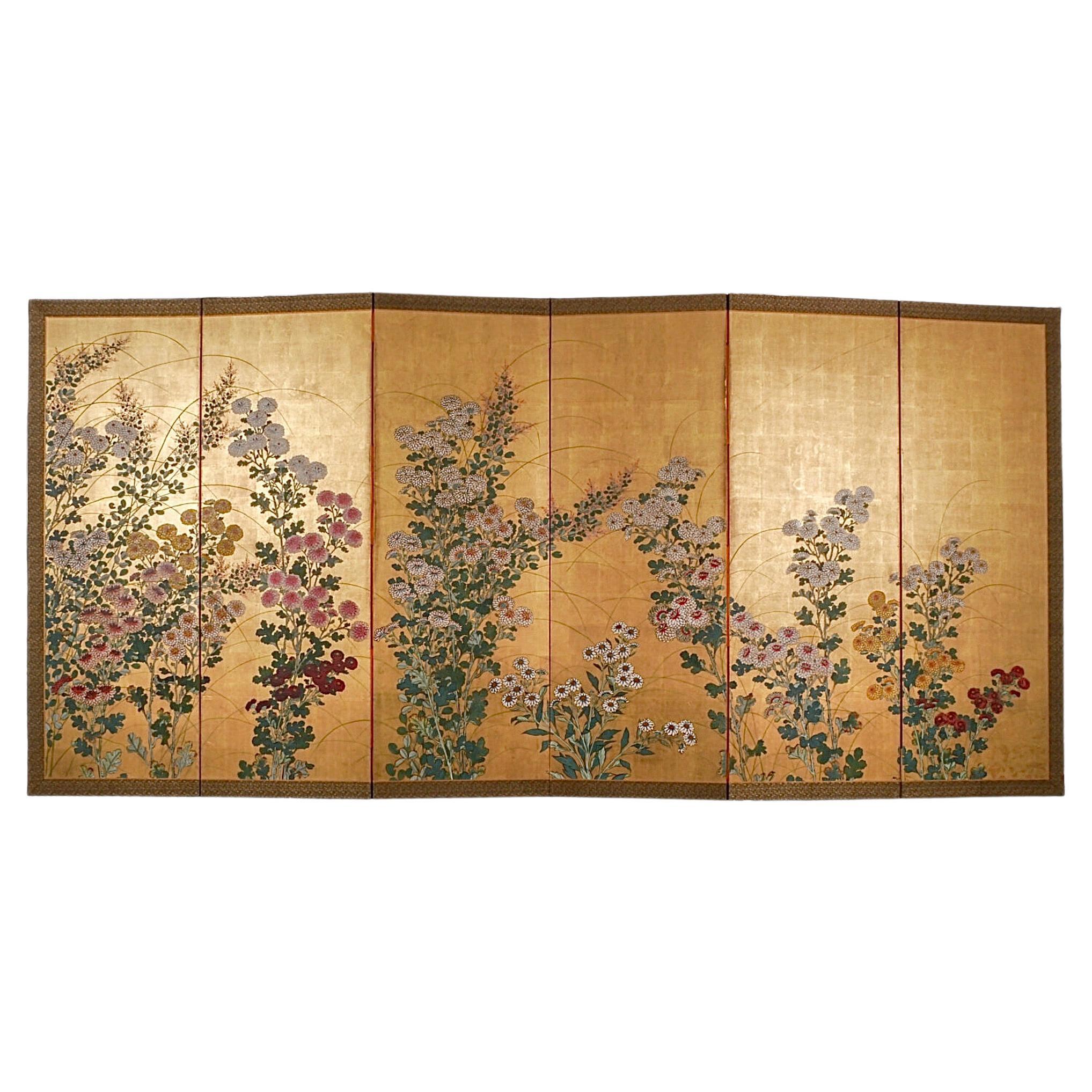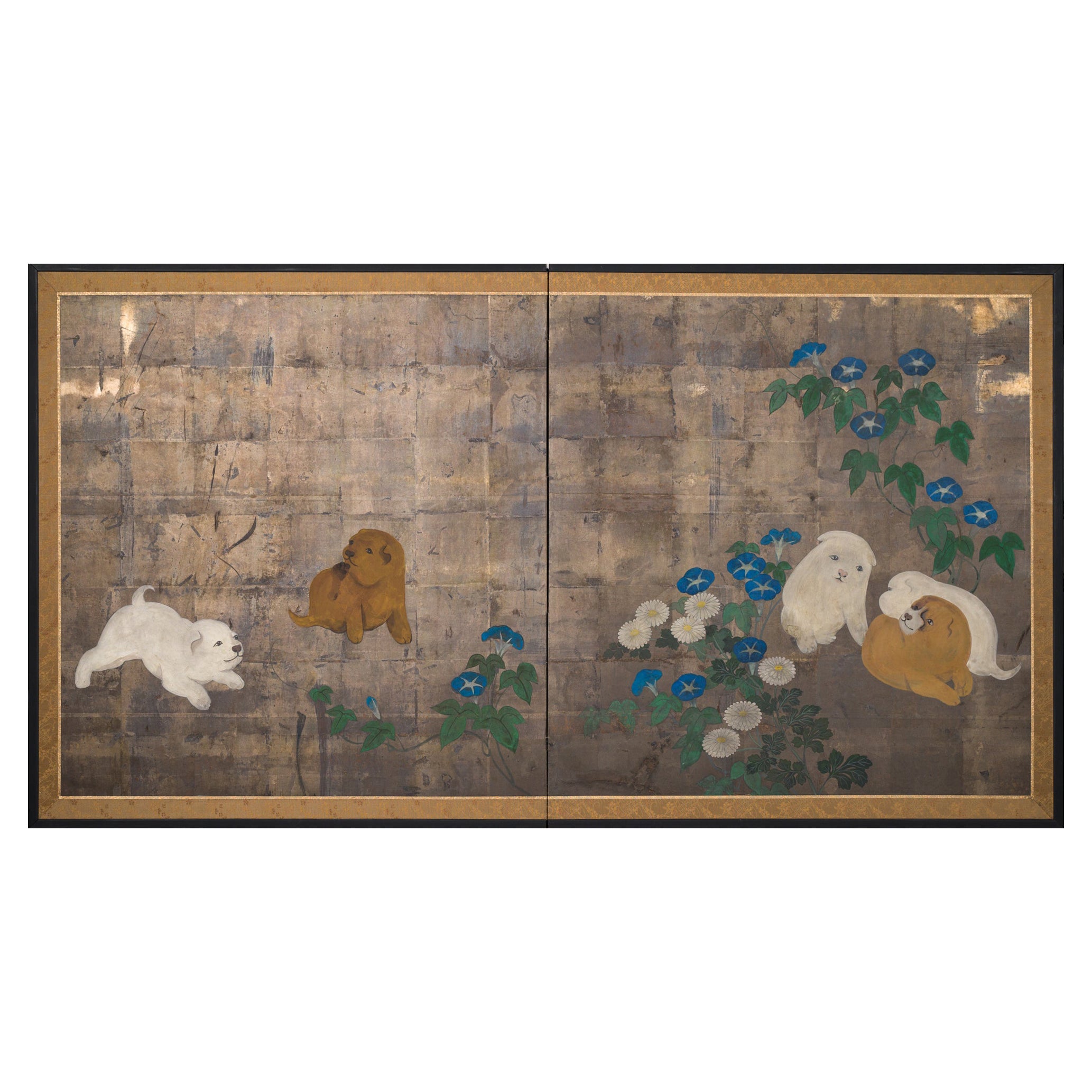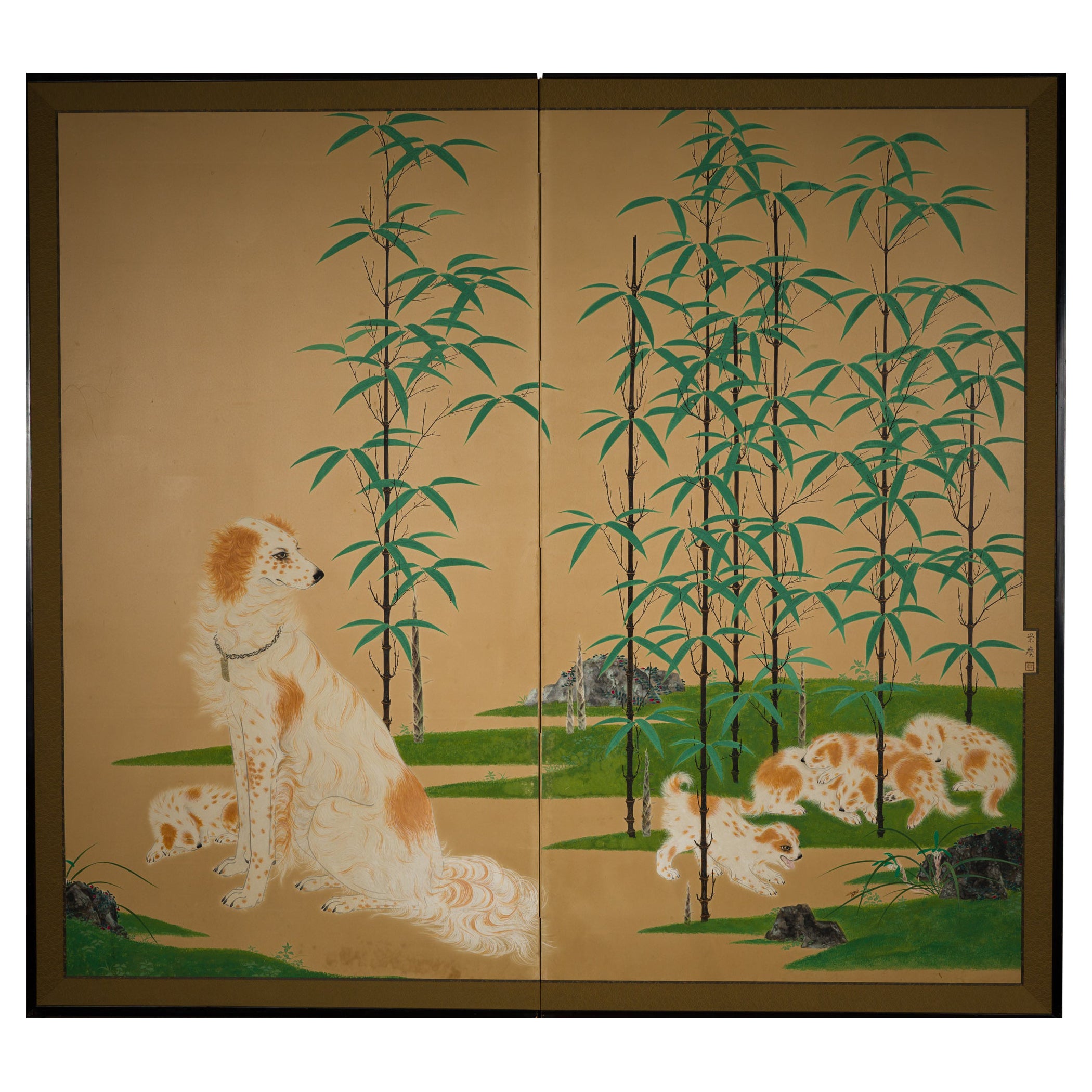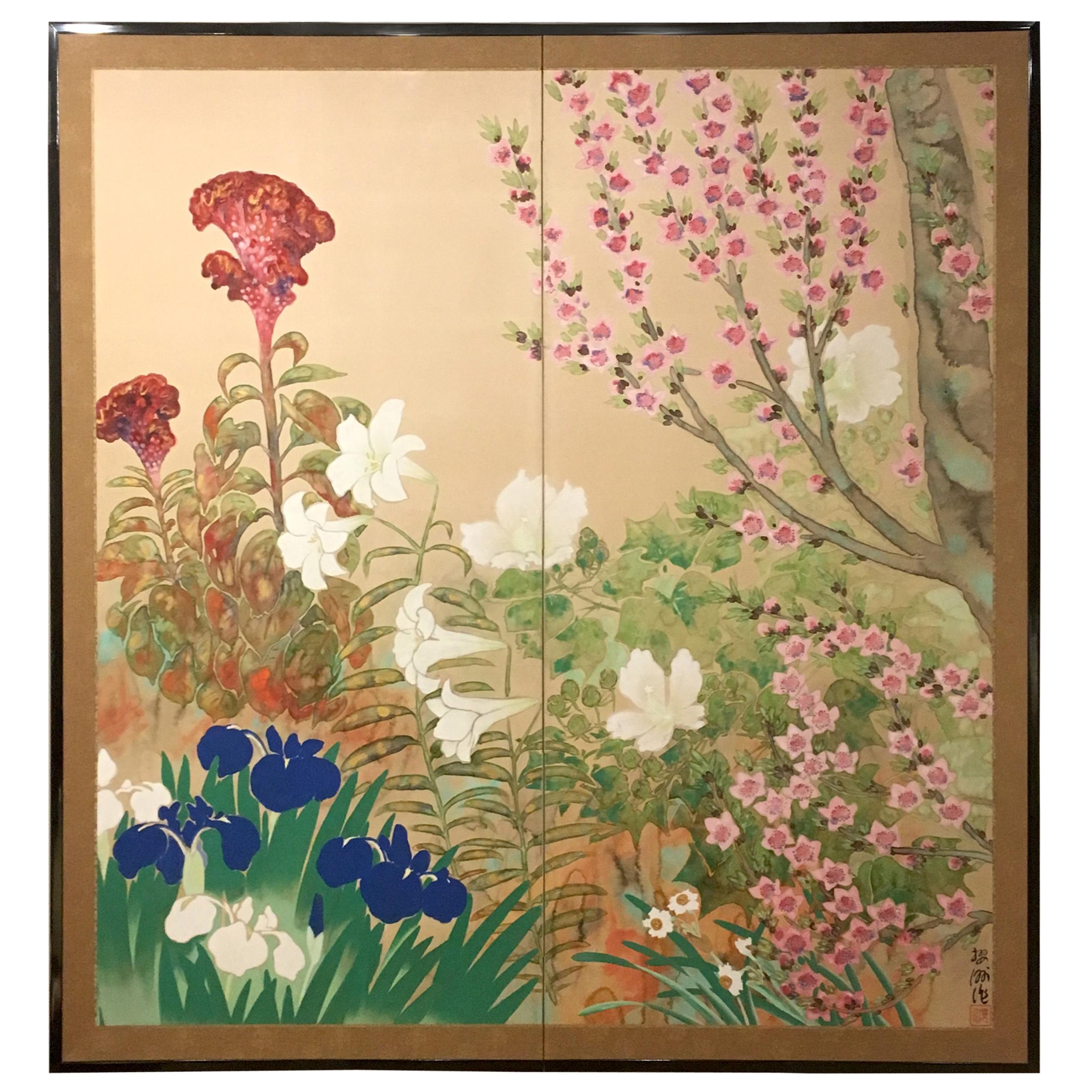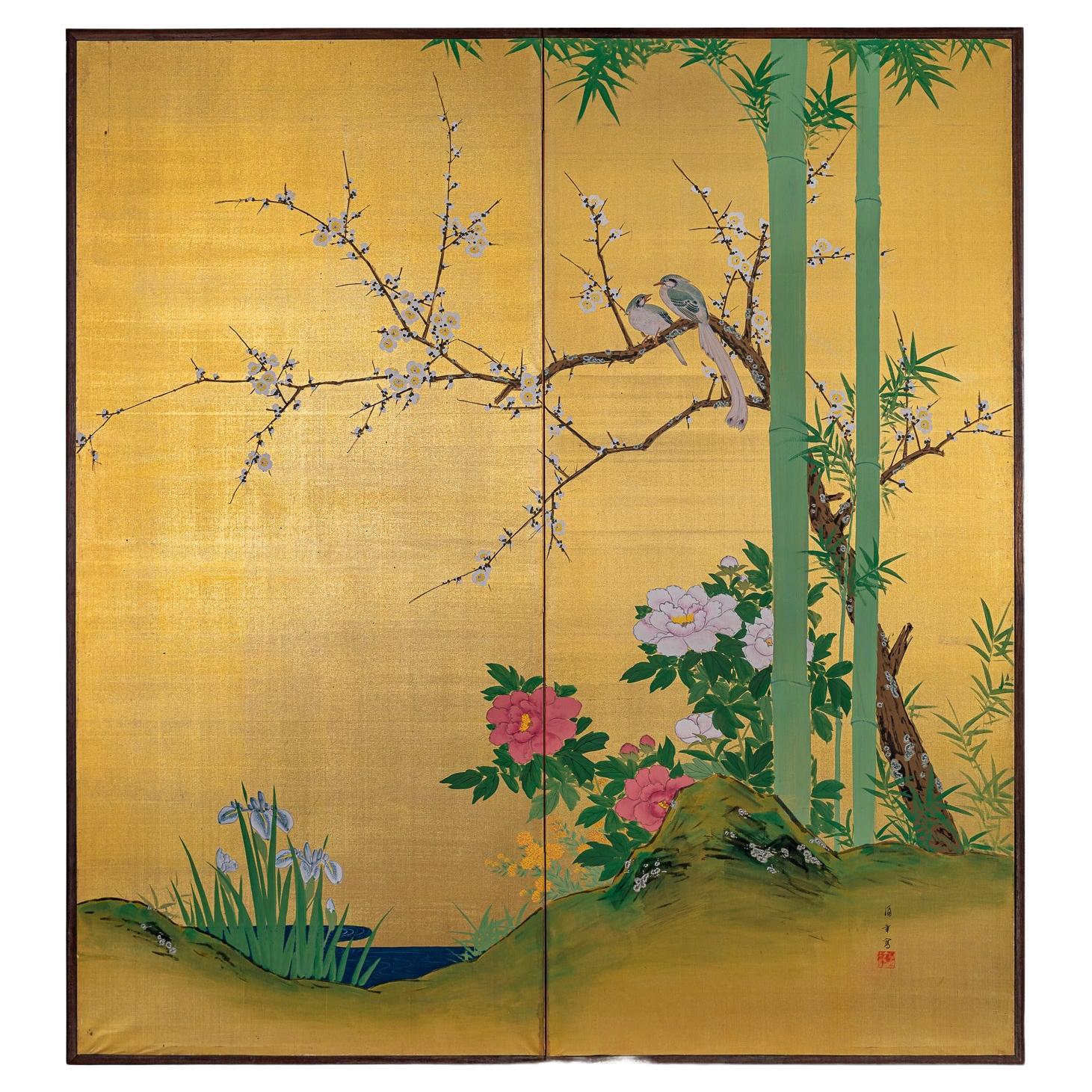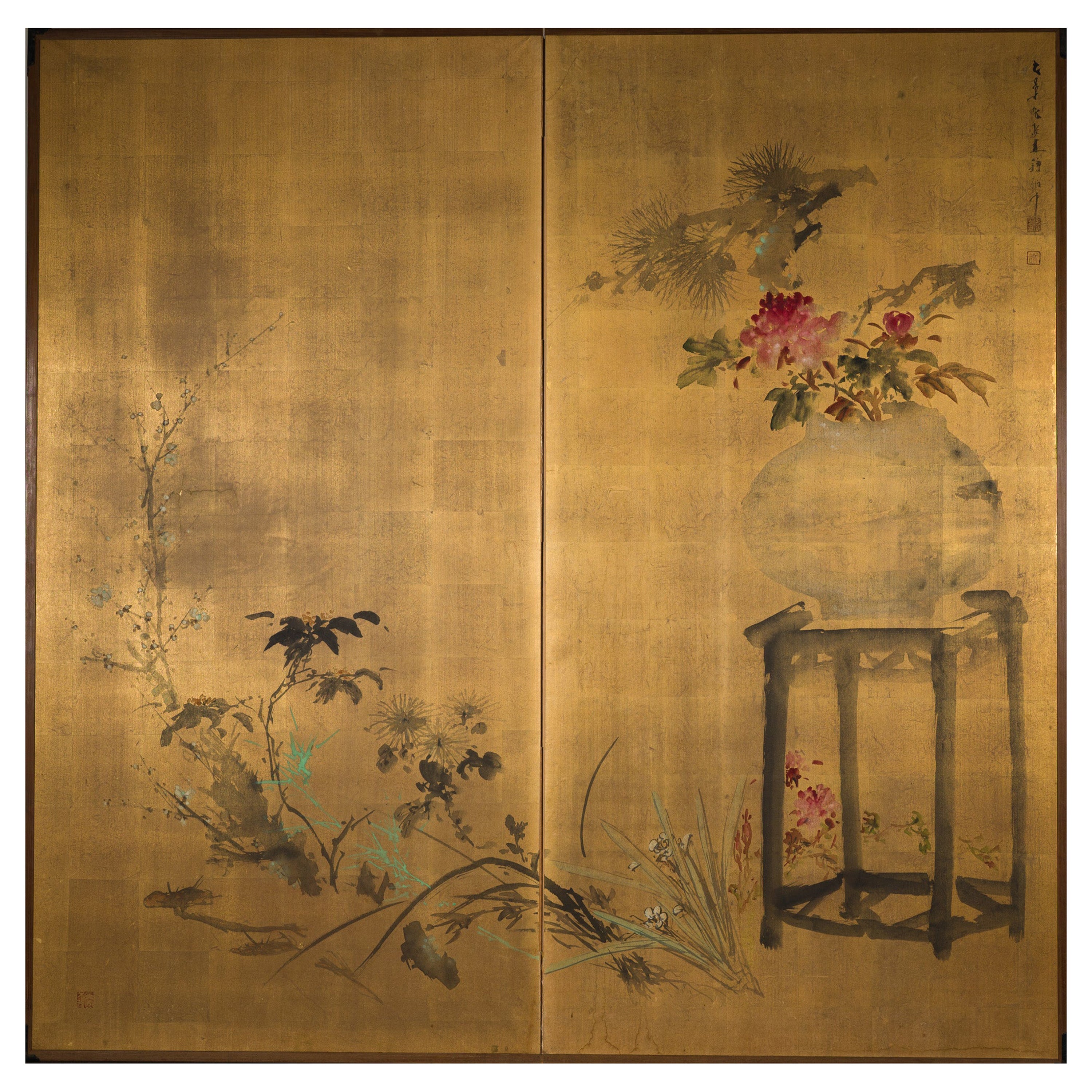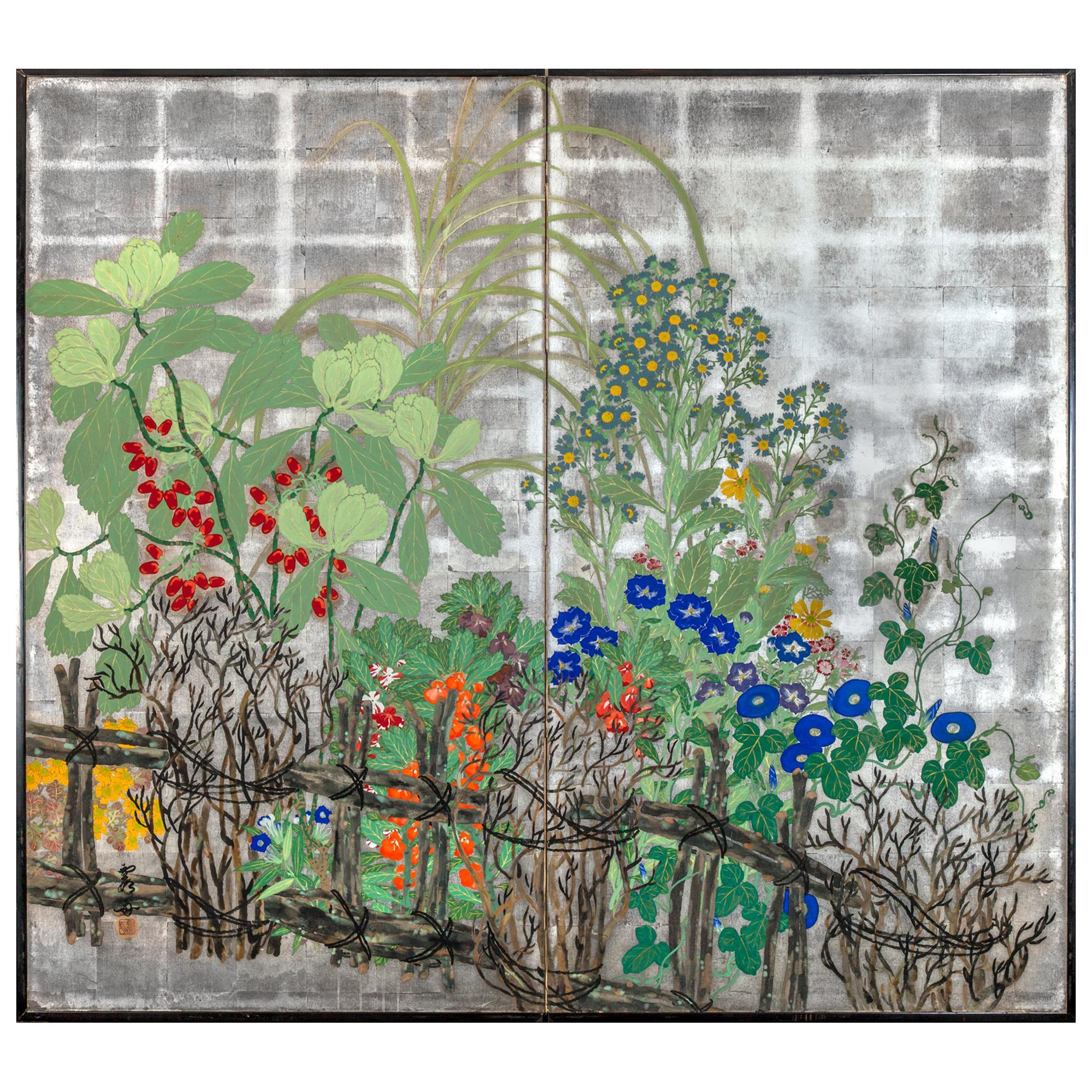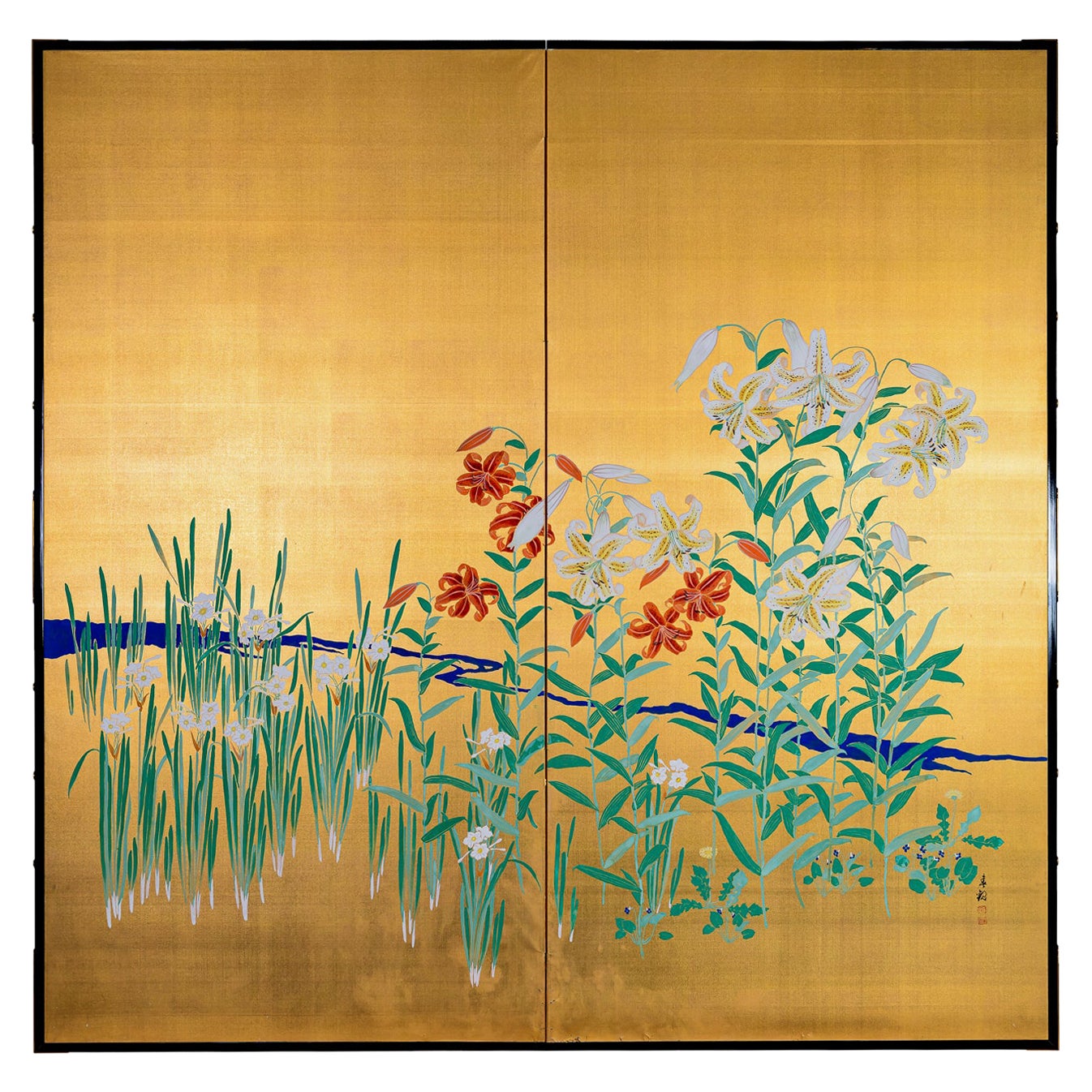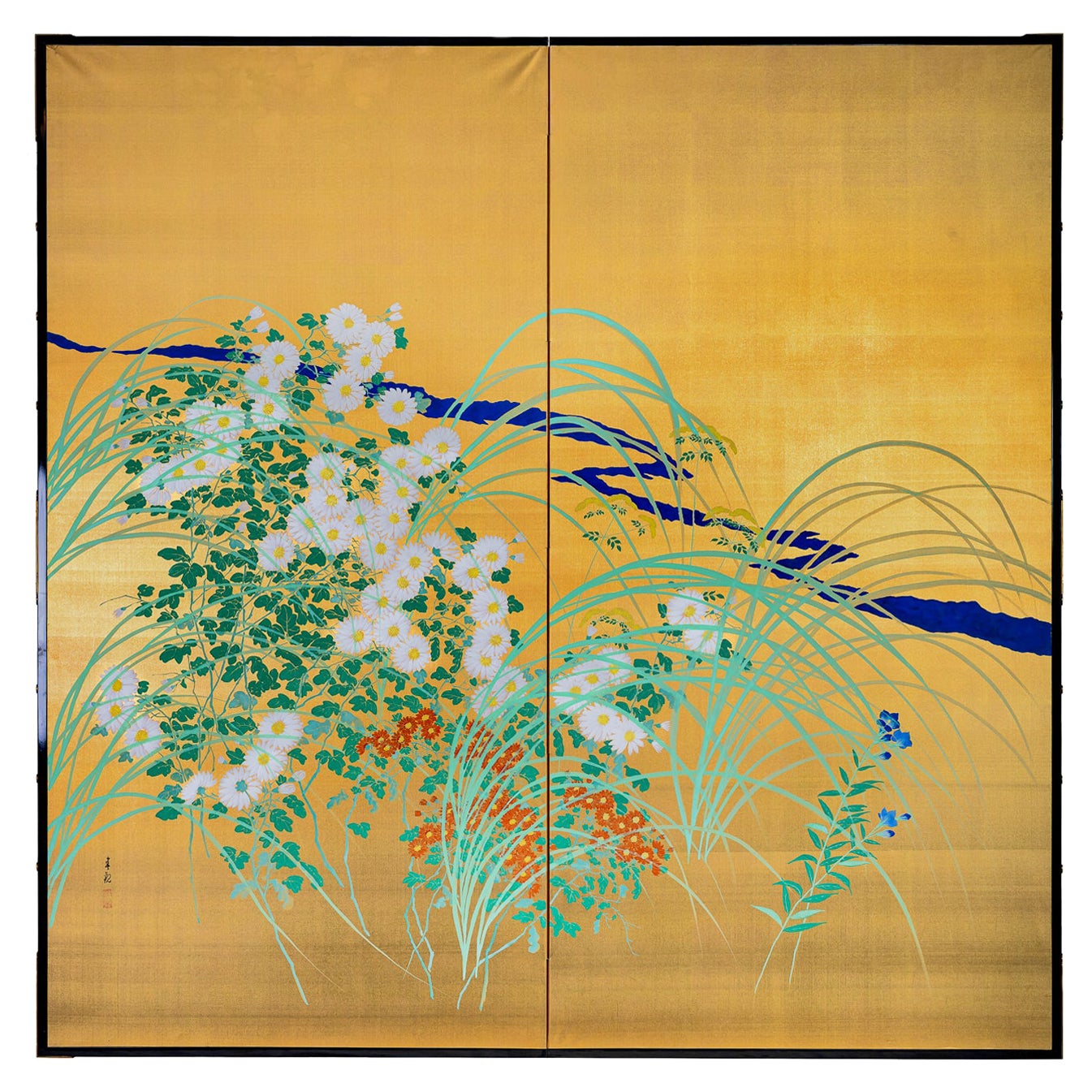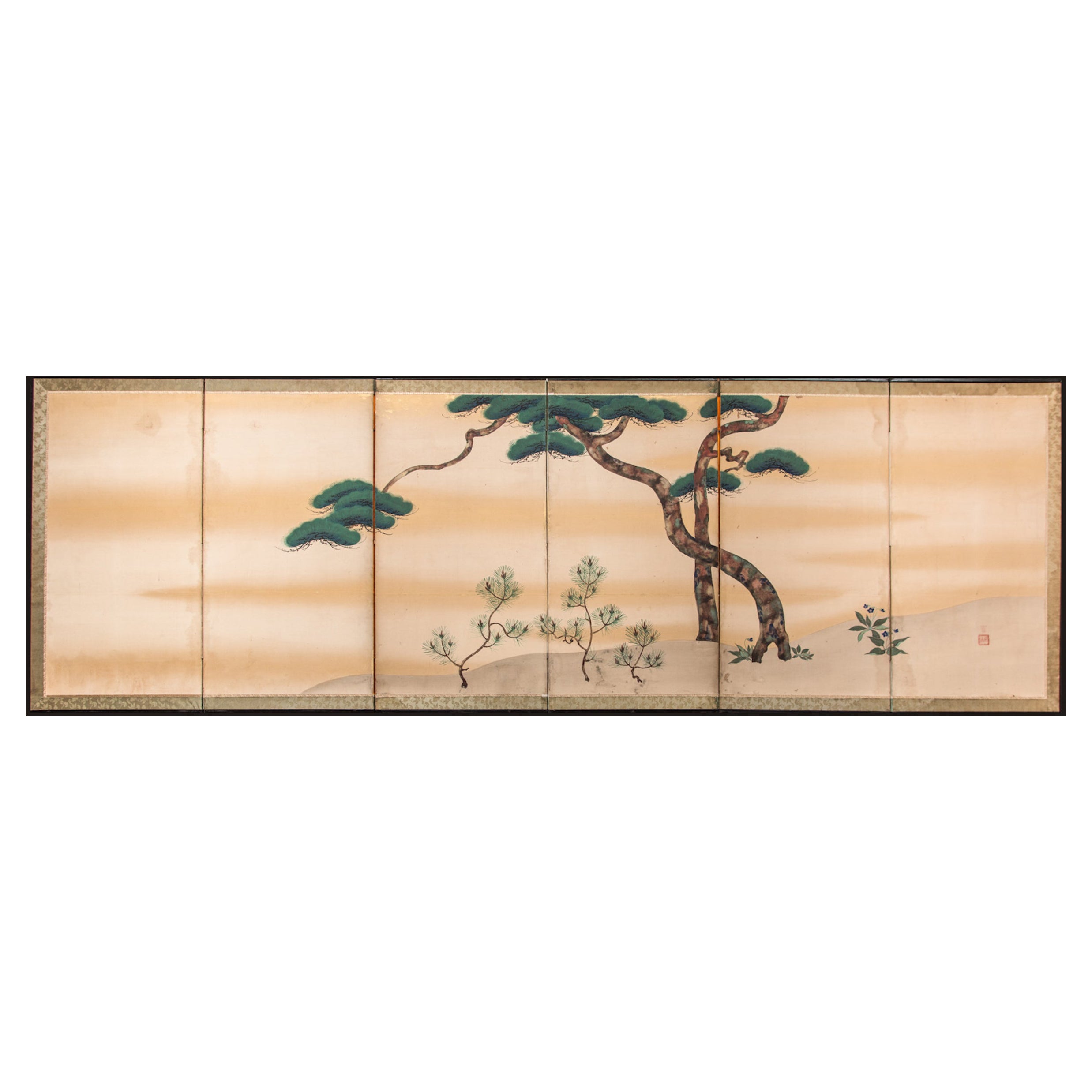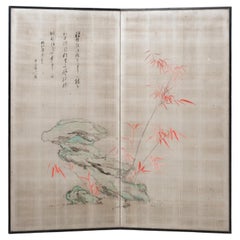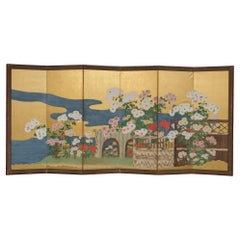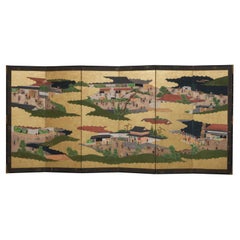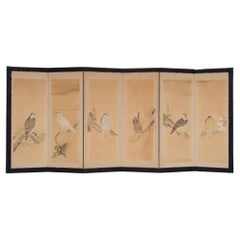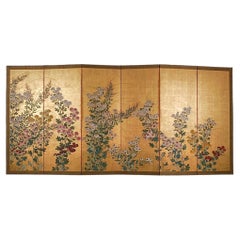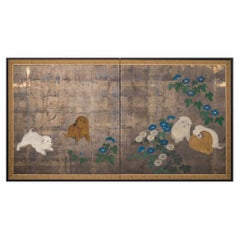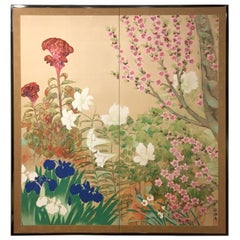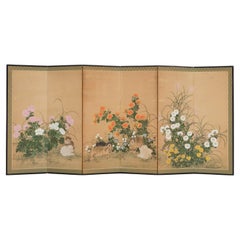
Japanese Mid-Size 6-Panel Byôbu 屏風 Screen with Puppies Playing in a Flower Field
View Similar Items
Want more images or videos?
Request additional images or videos from the seller
1 of 21
Japanese Mid-Size 6-Panel Byôbu 屏風 Screen with Puppies Playing in a Flower Field
About the Item
- Dimensions:Height: 47.84 in (121.5 cm)Width: 102.21 in (259.6 cm)Depth: 0.67 in (1.7 cm)
- Materials and Techniques:
- Place of Origin:
- Period:
- Date of Manufacture:Taishô period (1912-1926)
- Condition:Wear consistent with age and use. It has some traces of age and wear but overall in good condition. Please look at the photos for a condition reference.
- Seller Location:Amsterdam, NL
- Reference Number:Seller: N2421 1-21stDibs: LU7165232446982
About the Seller
4.8
Vetted Professional Seller
Every seller passes strict standards for authenticity and reliability
Established in 1996
1stDibs seller since 2022
22 sales on 1stDibs
Typical response time: 16 hours
Authenticity Guarantee
In the unlikely event there’s an issue with an item’s authenticity, contact us within 1 year for a full refund. DetailsMoney-Back Guarantee
If your item is not as described, is damaged in transit, or does not arrive, contact us within 7 days for a full refund. Details24-Hour Cancellation
You have a 24-hour grace period in which to reconsider your purchase, with no questions asked.Vetted Professional Sellers
Our world-class sellers must adhere to strict standards for service and quality, maintaining the integrity of our listings.Price-Match Guarantee
If you find that a seller listed the same item for a lower price elsewhere, we’ll match it.Trusted Global Delivery
Our best-in-class carrier network provides specialized shipping options worldwide, including custom delivery.More From This Seller
View AllLarge Japanese 2-Panel Byôbu 屏風 'Room Divider' with Painting of Bamboo & a Poem
Located in Amsterdam, NL
Beautiful, large two-panel byôbu (room divider) with a serene painting of red-leaved bamboo and rocks on an oxidized silver leaf background. Silver leaf continuously undergoes the process of oxidation, which creates a beautiful aged patina.
On the left an inscription from a ‘Zekku’ poem by the Chinese poet Yang Zai (1271?1323), titled: Shan shang zhu (bamboo (painted) on a fan).
Translated as :
Why would people plant a lot of bamboos?
The shade of a single culm is also beautiful.
In the autumn night it rocks on the wind,
And the fresh sound echoes in my dream.
Dated: Shôwa, the year kôshin (1938). Signature unknown...
Category
Early 20th Century Japanese Paintings and Screens
Materials
Other, Silver Leaf
Large Japanese 6-panel byôbu 屏風 (folding screen) with chrysanthemum garden
Located in Amsterdam, NL
A very colourful and captivating large six-panel byôbu (folding screen) with a refined continuous painting of a luscious flower garden filled with many different types of chrysanthemums (kiku), next to a winding river.
This multi-coloured painting is set on a shiny gold-leaf background, and the chrysanthemum flowers are painted by using shell paste (gofun) in low relief.
Several clutches with a great variety of chrysanthemum flowers are in full bloom and they each show their unique form and colour. Varying from white, red, yellow and pink. The flowers bloom all around and on different kinds of bamboo fences and trellises.
In Japan chrysanthemums are believed to represent happiness, love, longevity and joy.
The panels are surrounded by two silk borders, a thin black one, and a wide brown one. The screen is protected by a black and red negoro’nuri...
Category
Antique Late 19th Century Japanese Paintings and Screens
Materials
Gold Leaf
Large Japanese 6-panel byôbu 屏風 (folding screen) with Edo genre painting
Located in Amsterdam, NL
An elaborate, large six-panel byôbu (folding screen) featuring a detailed genre painting on gold leaf, capturing the vibrancy of festive scenes from the Edo period.
Central to the p...
Category
Antique Early 19th Century Japanese Paintings and Screens
Materials
Metal, Gold Leaf
Large Japanese 6-panel byôbu 屏風 (folding screen) of perched taka 鷹 (hawks)
Located in Amsterdam, NL
Wonderful large six-panel byôbu (folding screen) covered with six separate hanging scroll paintings (kakejiku) depicting different taka (hawks) perched on rocks and branches situated...
Category
Antique Early 19th Century Japanese Paintings and Screens
Materials
Silk, Wood, Lacquer, Paint, Paper
Tall, Japanese lacquer byôbu 屏風 (folding screen) by Mitsuo Takana 高名光夫 (1956)
By Mitsuo Takana
Located in Amsterdam, NL
Refined, tall two-panel byôbu (folding screen) completely adorned with ‘Wajima Ryûsaku’ lacquer by the Nitten award winning artist Mitsuo Takana (1956).
Featuring five refined images inspired by woodblock prints from the famous series ‘Tôkaidô gojûsan tsugi’ (The fifty-three stations of the Tokaido road), like the 1st station Nihonbashi, the 10th station Hakone, and the 21st station Okabe.
The design is executed in hiramaki-e (low-relief lacquer design) in shades of gold, silver, heightened by some multi-coloured details. Set on a shiny black lacquer substrate.
Signed in red lacquer in the lower right corner.
Including original signed & sealed wooden tomobako (storage box). The front with an inscription about the contents as described above. The inside:
‘Friend of the Nitten Exhibition Takana Mitsuo’ - Seal: ‘Hikari’.
‘Lacquer artist Wajima Ryûsaku’ - Seal: ‘Ryûsaku’.
Mitsuo Takana was born 1956 in Wajima, Ishikawa prefecture. He won several awards during exhibitions like: Ishikawa Contemporary Art Exhibition, Japan Artisans' Association Exhibition and the well-known Nitten Exhibition.
Dimensions:
Height 57.48 in/146 cm, Total width 66.92 in/170 cm (2 x 33.46 in/85 cm), Depth 1.10 in/2.8 cm.
Weight 56.21 lb/25.5 kg.
Wajima lacquerware...
Category
Late 20th Century Japanese Paintings and Screens
Materials
Wood, Giltwood, Lacquer
Pair of Japanese kakejiku 掛け軸 (hanging scrolls) depicting Niô guardians 仁王
Located in Amsterdam, NL
Pair of impressive, antique kakejiku (hanging scrolls) showcasing the awe-inspiring Niô guardians, also referred to as heavenly kings.
Each painting cap...
Category
Antique Early 18th Century Japanese Paintings and Screens
Materials
Brocade, Silk, Paint
$16,251 / set
Free Shipping
You May Also Like
Japanese Six-Panel Screen Byobu With Chrysanthemums And Autumn Grass and Flower
Located in Torino, IT
The 19th Century Six-Panel Japanese folding screen "Byōbu" usually used in the most important Japanese house to stop wind and also to separate different space of the same big room de...
Category
Antique Mid-19th Century Japanese Edo Paintings and Screens
Materials
Gold Leaf
Japanese Two Panel Screen Akita Puppies and Morning Glories
Located in Hudson, NY
On gold leaf.
Category
Antique Late 19th Century Japanese Paintings and Screens
Materials
Paper
Japanese Two Panel Screen Mother and Puppies Under Bamboo
Located in Hudson, NY
Mineral pigments on paper. Signature and seal read: Shigehiro.
Category
Early 20th Century Japanese Paintings and Screens
Materials
Paper
Japanese Two-Panel Screen Spring Flowers
Located in Hudson, NY
A vibrant celebration of spring using a colorful ensemble of coxcomb, irises, lilies, hybiscus, and a blossoming cherry tree. Great examples of "tarashikomi" or "painting-in", a Rim...
Category
Vintage 1930s Japanese Showa Paintings and Screens
Materials
Silk, Paper
Japanese Two Panel Screen: Summer Flowers
Located in Hudson, NY
Screen depicts Summer flowers and birds on gilded silk. Signature reads: Konishi Fukunen. Notes about Artist: Konishi Fukunen (1887-1959) was born the second son of the Paper mounting specialist Konishi Uhei in Takeo, Fukui prefecture in the mid Meiji period. In 1902 he was sent to Kyoto to study painting under Suzuki Shonen...
Category
Mid-20th Century Japanese Paintings and Screens
Materials
Silk
Japanese Two Panel Screen: Ikebana 'Flower Arrangement'
Located in Hudson, NY
Mineral pigment on gold silk. Signature reads: Nana Keicho Ho, Shinsho, Gachu ; Seal reads: Soju ; Seal on reverse reads: Koto Fusai.
Category
Antique Late 19th Century Japanese Paintings and Screens
Materials
Silk
Recently Viewed
View AllMore Ways To Browse
Japanese 2 Panel Screen
Byobu Six
Six Panel Byobu
Antique Asian 4 Panel Screen
Asian Hand Painted 4 Panel Screen
Japanese 4 Panel Screen
Rare 4 Panel Screen
4 Panel Silk Screen
Antique 2 Panel Japanese Screens
Japanese 6 Panel Screen
Single Panel Japanese Screen
4 Panel Japanese Antique Screen
Japanese Puppies
4 Panel Asian Silk Screens
4 Panel Japanese Wall Art
Japanese Folding Screen 4 Panels
4 Panel Hand Painted Japanese Screens
2 Panel Byobu
